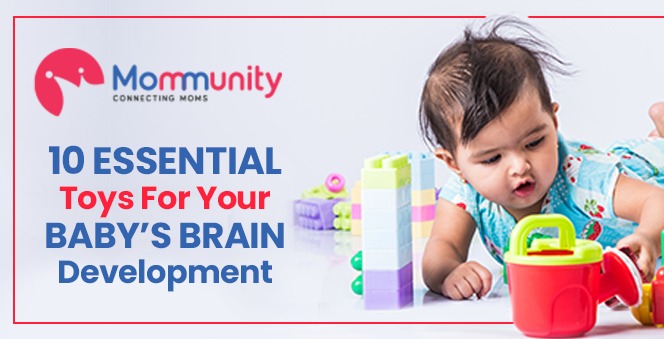While producing milk is a natural process, getting it from the breast to the gut needs a little know-how and a lot of practice. The early attempts at breastfeeding for almost every new mom and baby are haphazard and unsuccessful at best. However, optimal placement is critical in assisting your newborn in latching on properly and avoiding nipple discomfort and other breastfeeding issues. 5 easy Techniques for Breastfeeding a Newborn
Different nursing positions may be more beneficial to you and your baby than others. These are the breastfeeding positions that nursing parents should be aware of, ranging from football hold to cradle hold to laid-back. You’ll find the optimum breastfeeding position for you after some trial and error. You’ll be an expert at breastfeeding your child in no time.
WHEN BREASTFEEDING, HOW DO YOU HOLD THE BABY?
Begin by putting the infant on one side, close to your breasts. Make sure your baby’s entire body is facing you, with his or her ear, shoulder, and hip in a straight line (those little boy or girl parts should be parallel to the breast you’re not breastfeeding from).
Your newborn’s head should not be turned to the side; it should be straight and parallel to the body. To make it simpler to guide the baby to the breast, use a nursing or ordinary cushion to raise him to a comfortable height.
VARIOUS POSITIONS FOR BREASTFEEDING
Try one of these five optimal nursing positions once you and your baby have settled in:
1. CRADLE HOLD
Follow these steps to nurse your baby in a cradle-hold position:
- Place your baby’s head in the bend of your arm on the side where you’ll be breastfeeding, with the hand on that side supporting the remainder of the body.
- With your other hand, cup your breast, positioning your thumb above your nipple and areola at the point where your baby’s nose will come into contact with your breast.
- Place your index finger where your baby’s chin will come into touch with the breast. Compress your breasts softly so that the nipple points toward your baby’s nose. Your baby is ready to latch
2. CROSSOVER HOLD
Follow these steps to nurse your baby in a crossover, hold position:
- With the hand opposite the breast, you’ll be nursing from, grasp your baby’s head
- Place your wrist between your baby’s shoulder blades, your thumb behind one ear, and the rest of your fingers behind the other.
- Cup your breast with your free hand, as if you were doing the cradle hold.
3. FOOTBALL HOLD
The football hold position, also known as the clutch hold, is especially beneficial if you have:
• Had a C-section and wish to avoid resting your baby against your abdomen
- Large breasts
- Twins
- A tiny or preterm baby
Follow these steps to nurse your baby while in a football hold:
- Place your baby at your side, facing you, with his or her legs tucked under your arm (like a football) on the same side as the breast you’re nursing from.
- With the same hand, support your baby’s head while using your other hand to cup your breast in the cradle position.
4. LAID-BACK POSITION (“BIOLOGICAL NURSING”)
A relaxed breastfeeding position is especially beneficial for parents with smaller breasts, neonates, and babies with sensitive tummies or abundant gas.
Follow these steps to nurse your baby in a relaxed position:
- Lean back in a semi-reclining position on a bed or couch, firmly supported by cushions, so that when you place your baby tummy-to-tummy on your body, head at your breast, gravity will keep him directed to you.
- Your baby can rest on you in any direction as long as his entire front body is against yours and he can reach your breast.
- Your baby can latch on naturally in this position, or you can assist him by moving the nipple toward his mouth.
- Once your baby is at your breast, all you have to do now is lean back and rest.
5. SIDE-LYING POSITION
This is a good posture to be in if you’re breastfeeding in the middle of the night.
Follow these steps to nurse your baby while lying on your side:
- Lie on your sides, tummy to tummy, with both you and your baby.
- If you need to cup your breast, use your hand on the side you’re not resting on.
- When employing this posture, there should be no additional bedding surrounding the infant that could cause asphyxia. For the same reason, this position should not be used in a chair, couch, or water bed.
HOW TO GET A PROPER LATCH
It’s critical that your baby is properly latched on now that he or she is in position. The most prevalent cause of breast discomfort, especially sore nipples, is improper latching. Use the following tips to latch your newborn to your breast:
Using your nipple, gently tickle the baby’s lip.
This should cause your baby’s mouth to spread wide, similar to a yawn. Some breastfeeding experts recommend placing your nipple toward your baby’s nose and then down to the upper lip to widen the mouth. During nursing, this keeps the lower lip from tucking in. If your infant turns away, softly brush the side closest to you on the cheek. The rooting reflex causes the baby to return to your breast.
Place your infant close to your breast.
Allow your infant to take the initiative rather than moving your breast toward the mouth or pushing your nipple into an uncooperative mouth. It may take a few tries for your kid to open his or her lips wide enough to latch properly.
Make sure the baby’s mouth covers the nipple as well as at least a portion of the areola.
Sucking only the nipple does not squeeze the milk glands, resulting in discomfort and cracking. The motion of the mouth, tongue, and lips in the appropriate place, however, will massage the milk out of the milk glands. 5 easy Techniques for Breastfeeding a Newborn
EXAMINE WHETHER THE BREAST IS RESTRICTING YOUR BABY’S NOSE.
You can lightly depress the breast with your finger to move it away from your baby’s nose once he or she is properly latched on. A minor elevation of the baby may also provide some breathing space. But be careful not to release the baby’s grasp on the areola as you move about.
ARE YOU UNSURE IF YOUR BABY IS BEING FED?
Examine his cheeks: A powerful, steady, and rhythmic action should be visible. That signifies your little feeder is sucking and swallowing properly. If you need to shift the baby to feed, unlatch his grasp and start lip tickling again to get him to latch on with his nipple and areola in his mouth. It may take a few Breastfeeding a Newborn tries to get the latch to work properly at first. Keep going. In the long term, your baby will be happier if your efforts result in a mouthful of milk rather than a mouthful of air.
UNLATCHING YOUR BABY
Whether you’re having latching issues and need to re-latch or your baby has completed feeding but is still clutching onto the breast, Breastfeeding a Newborn pulling your breast out of your baby’s mouth abruptly might cause harm to your nipple. Interrupt the suction by gently placing your finger into the corner of the baby’s mouth or squeezing the breast near the mouth.
POSITIONS TO AVOID DURING BREASTFEEDING
Your breasts may not be stimulated to create more milk if your baby is positioned incorrectly, and he or she may not be getting enough breast milk, to begin with. And this can lead to even more issues in the future.
HERE ARE SOME NURSING POSITIONS TO STAY AWAY FROM:
You’re stooping over your child. Many latching-on issues arise as a result of Mom hunching over the baby, trying to force the breast into her mouth. Maintain a straight back and bring your baby up to your breast.
The baby’s body and head are turned in opposite directions. Make sure your baby’s head is not facing your breast while his body is facing away.
The breast is too far away from the baby’s body. If that’s the case, he’ll yank on your breast while you’re feeding – painful for you and maybe disappointing for the baby!
5 easy Techniques for Breastfeeding a Newborn




